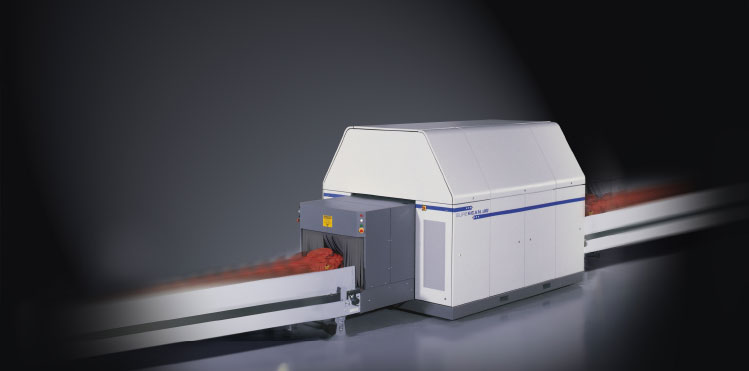
SureScan’s x1000 Multi-Energy CT EDS Stationary Gantry is now both TSA and ECAC EDS Standard 3 certified. “The approvals make the x1000 one of the few scanners suitable for most airports around the world,” said LeeAnn Levesque, President and CEO.
LeeAnn Levesque, President and CEO, SureScan Corporation, interviewed by Samantha Jenkins.
Security is, of course, an integral part of the travelling process, and with strict guidelines in place it is crucial that airports have a seamless system to identify security threats in hold baggage, while maintaining an exemplary passenger experience and efficiency. SureScan Corporation, an emerging leader and global company, brings advanced explosive detection technology to the forefront of the security marketplace. Its Explosive Detection System (EDS) – the x1000 Multi-Energy CT EDS Stationary Gantry – is TSA-certified, and in November also achieved European Civil Aviation Conference (ECAC) Explosive Detection System (EDS) Standard 3.
“One, or both, of these approvals is required at most international airports,” explained LeeAnn Levesque, President and CEO, SureScan Corporation. “These approvals demonstrate independent verification that the x1000 provides the highest levels of detection performance with acceptable false alarm rates. The approvals make the x1000 one of the few scanners suitable for most airports around the world, and the only scanner with multi-energy detection.”
The baggage screening system uses multi-energy detectors, fixed position X-ray sources, and a single moving belt with a large rectangular tunnel throughout. Its advanced reconstruction algorithms perform 3D CT reconstruction, and the design allows for estimation of both density, and effective atomic number analysis. Levesque explained that by utilising multi-energy detectors, the estimation of effective atomic number “is more precise than dual energy technology”.
The x1000 uniquely uses multi-energy to enable the detection of emerging threats, while maintaining lower false alarm levels. “Many ‘home-made’ or improvised explosive devices utilise common chemicals. We have seen extremist groups increasingly seek to leverage these threats, as the constituent materials may be easier for them to obtain than traditional commercial or military explosives,” Levesque said. “These chemicals require different, more capable algorithms to detect. Multi-energy detectors work in a similar way to spectroscopic detectors, allowing a more precise estimate of effective atomic number.” Once the systems are installed at the airport, the local security authority manages the equipment in line with local laws, which vary by airport and country.
SureScan is also a key research partner of the US Department of Homeland Security (DHS). Earlier this year it was awarded an additional US$1 million in government funding for research into the advancement of explosive detection technology. The funding has allowed SureScan to explore new high-resolution reconstruction algorithms, and work to stretch the boundaries of performance on fixed source CT EDS designs.
The x1000 is suited to the airport environment and is designed with a baggage-handling interface in mind. Levesque highlighted a multitude of benefits for airports, including lower power consumption than competitive solutions, capability of increased detection to meet stricter standards; an efficient footprint; and no rotating gantry resulting in lower lifecycle costs. It can also increase belt speed, and consequently capacity, over the system’s 10-15 year lifecycle.
SureScan systems have been utilised for data collection activities at New York-JFK International Airport, and Boston Logan Airport. The new ECAC EDS Standard 3 has opened up a wealth of potential for the x1000 worldwide, and at this year’s ACI Airport Exchange, SureScan aims to increase brand awareness to the international airport security market. “Due to the EU’s mandates that all EU airports upgrade their primary screening of hold baggage between 2014 and 2020, SureScan Corporation sees a great deal of CT EDS upgrade requirements, as well as several new terminals and airports in Europe and around the world that will require TSA certified and/or ECAC EDS Standard 3 scanners,” Levesque concluded.







